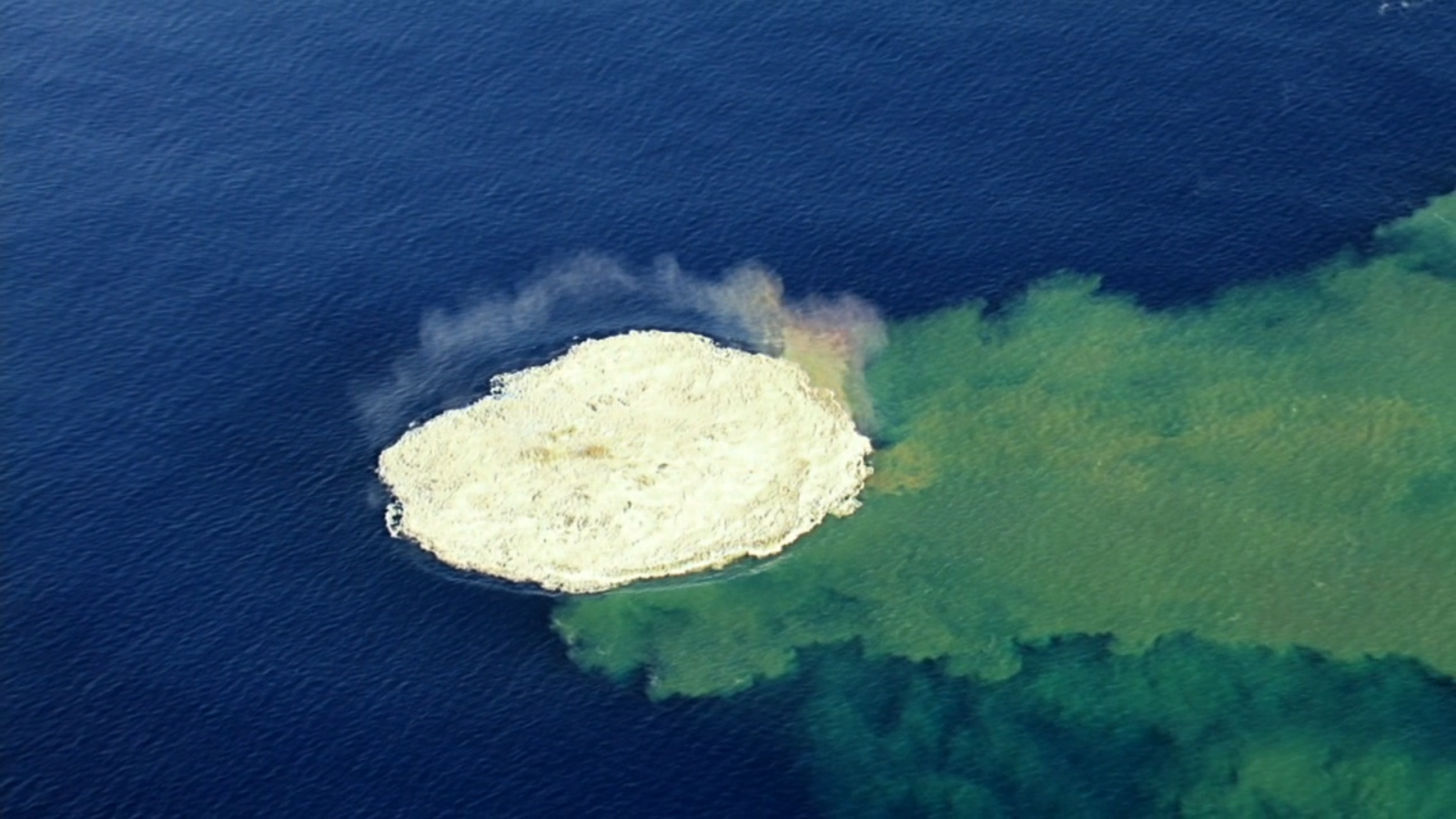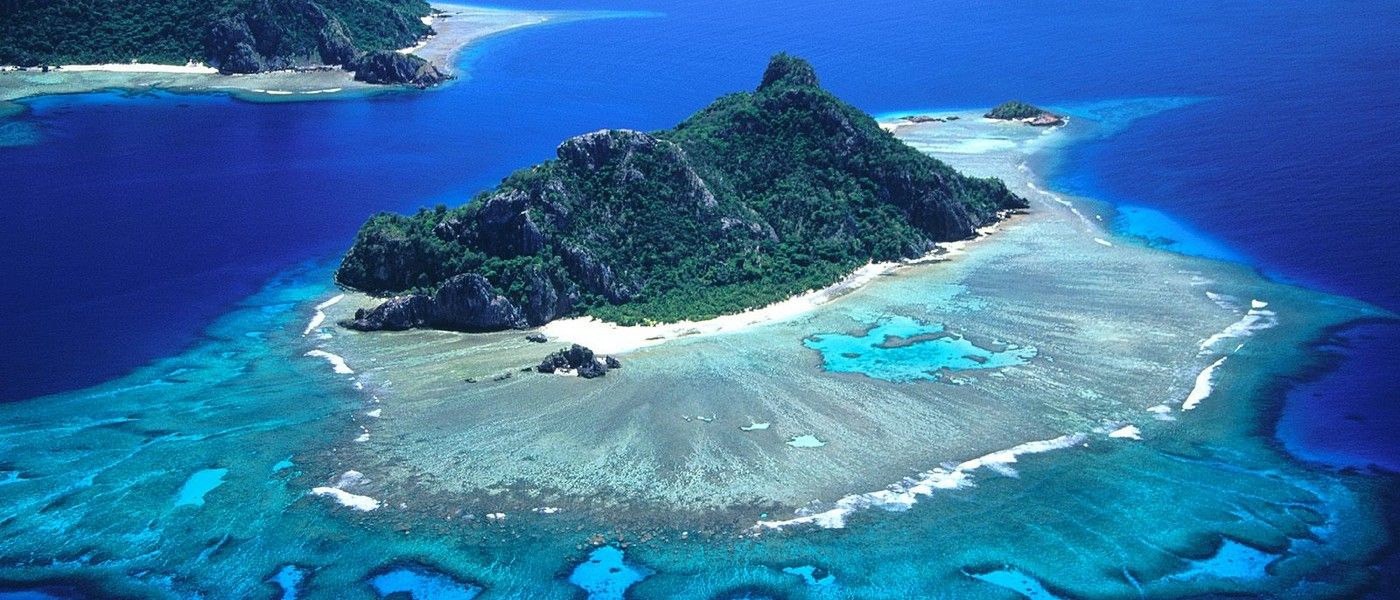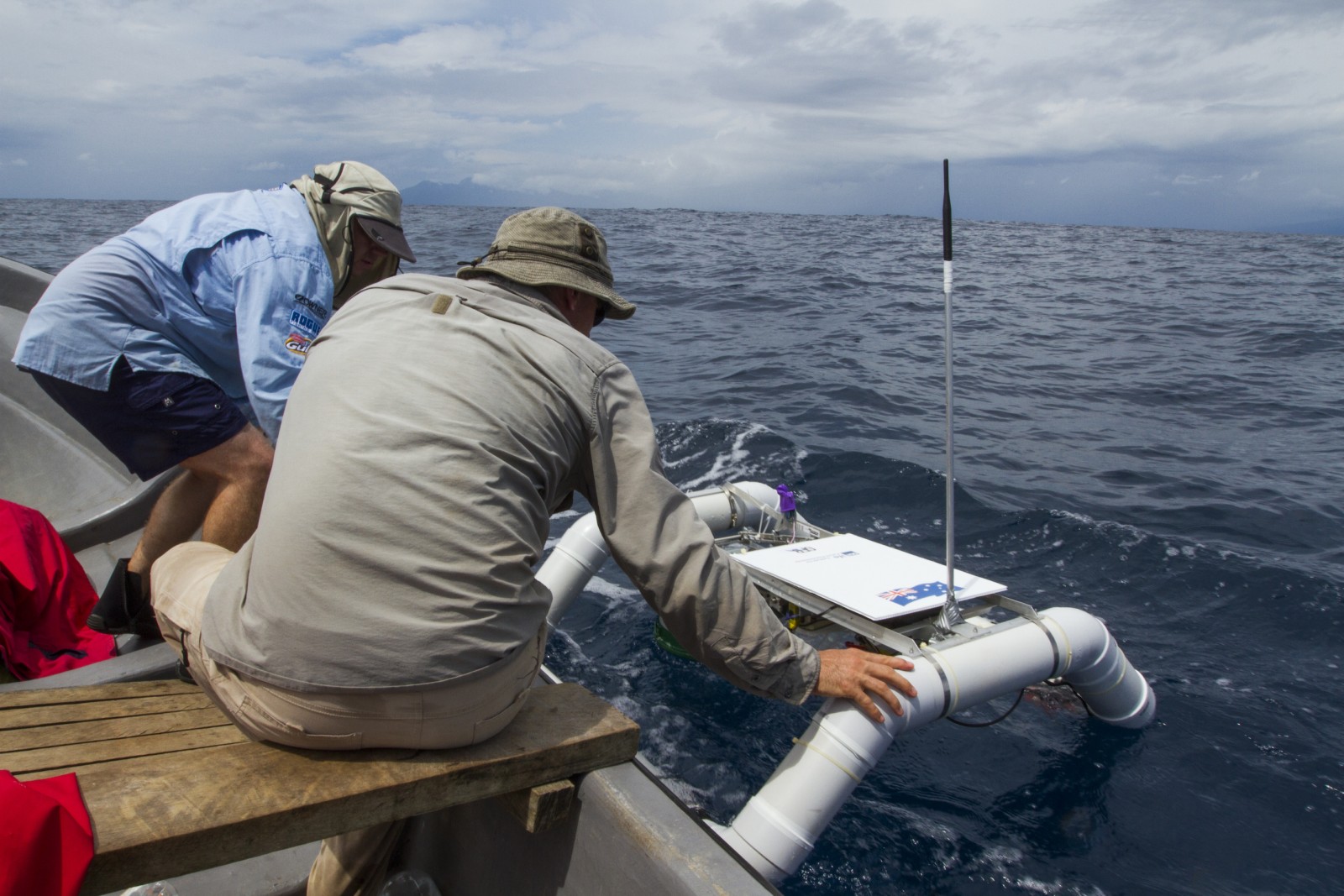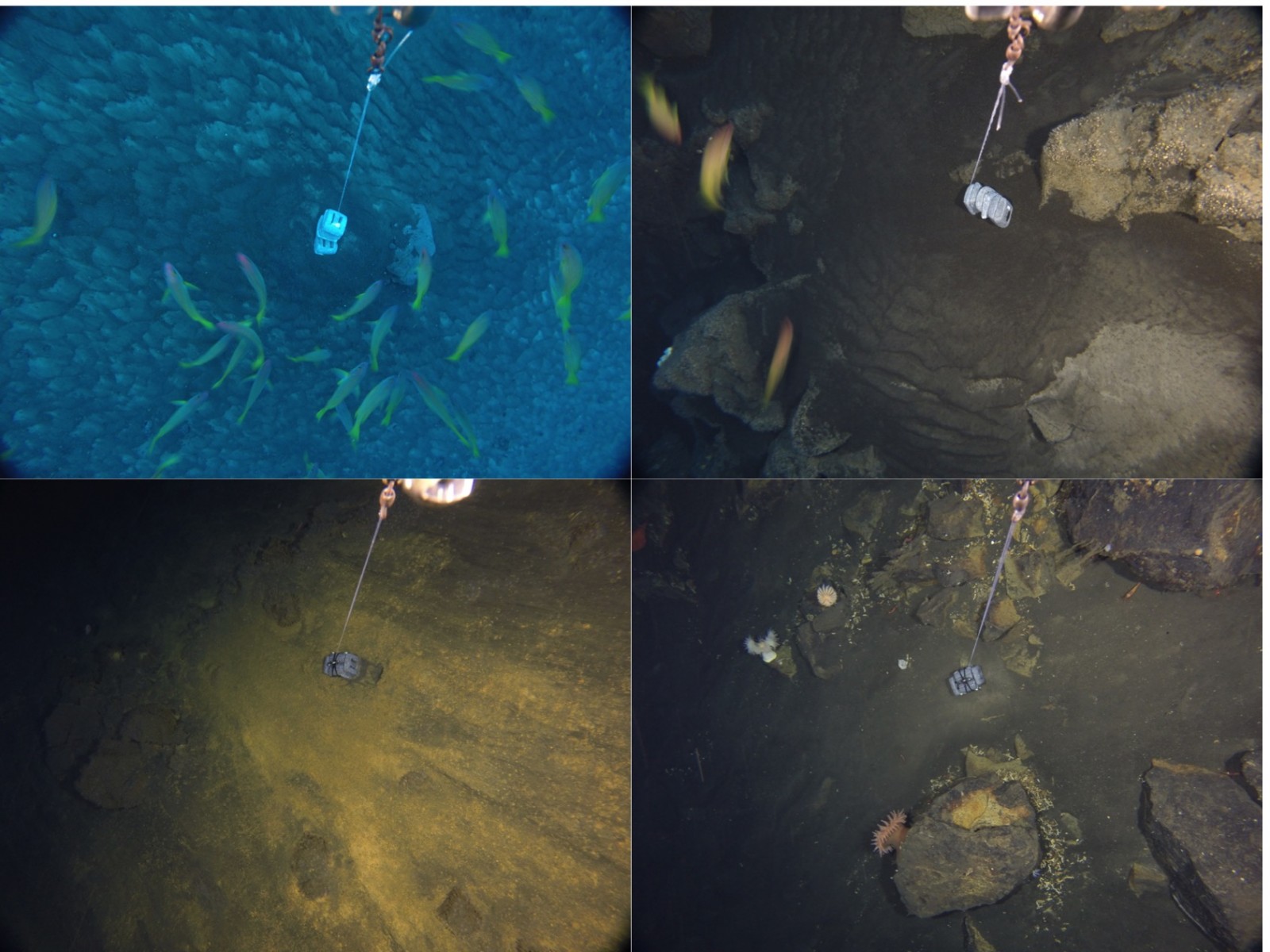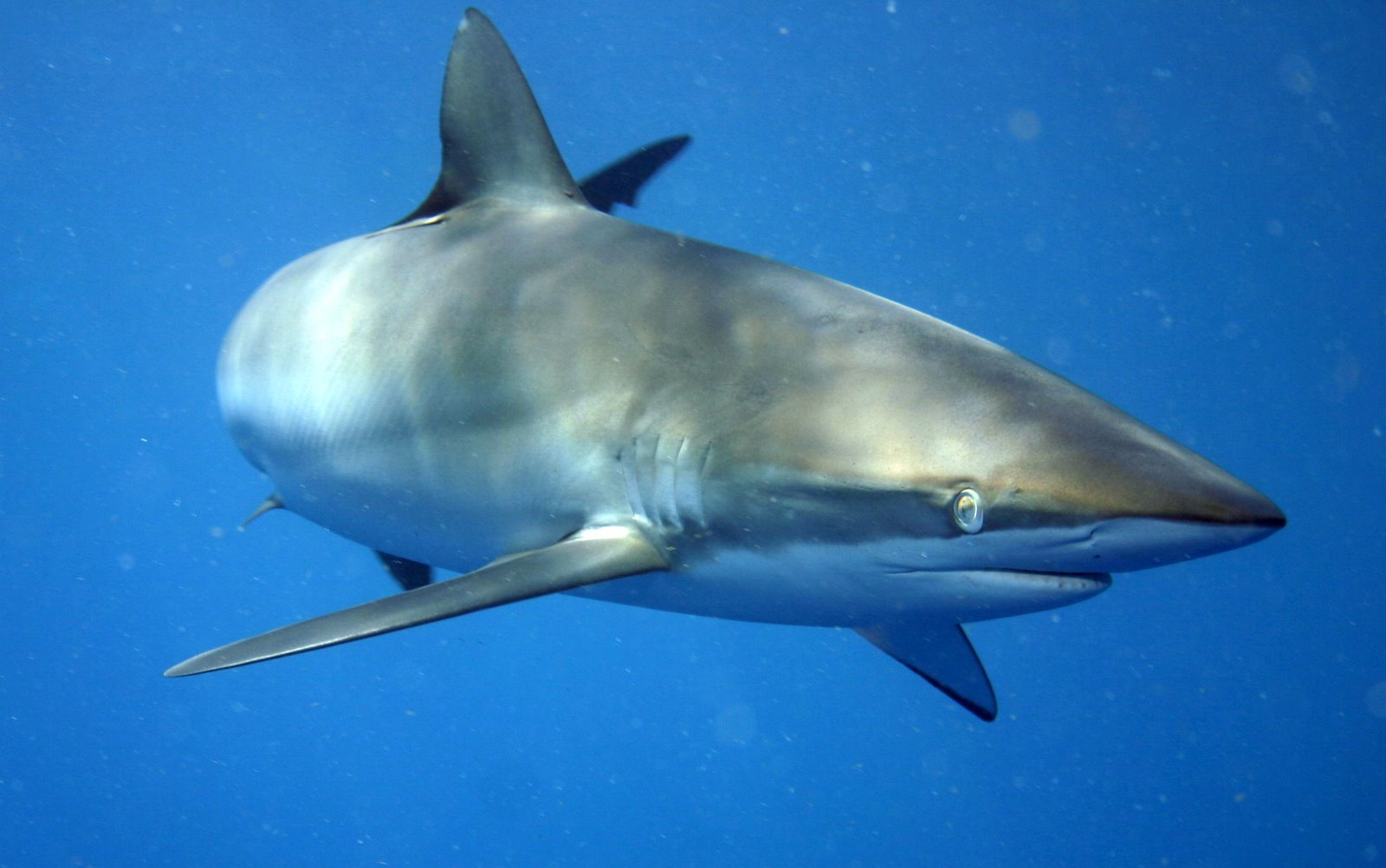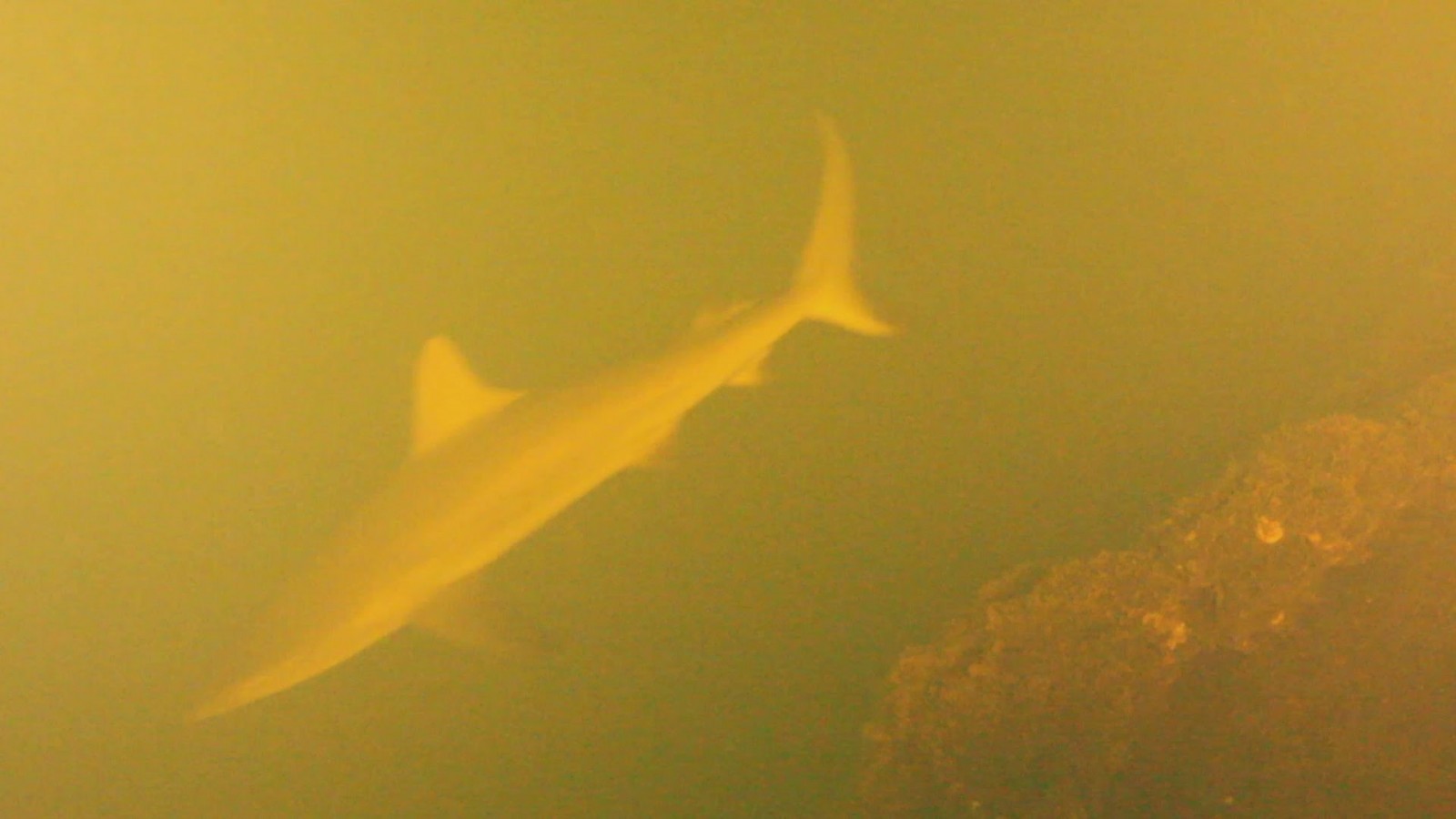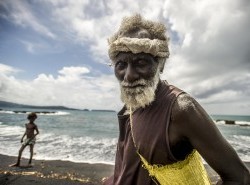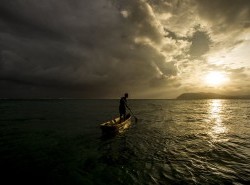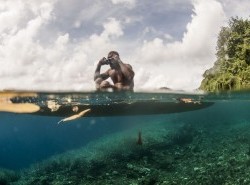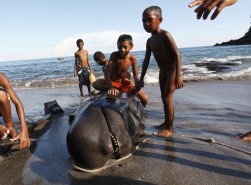Kavachi is one of the most active submarine volcanoes in the world and it's less than 25km from the shore in the Western Province of the Solomon Islands. Known for frequent and explosive eruptions, Kavachi has formed a new island several times in the past century. We headed there to study its geothermal activity...the last thing we expected to find were sharks swimming around in the hot acidic waters inside its crater!
A team of Nat Geo scientists discover some unexpected visitors in Solomon Islands submarine volcano
The newly formed island is quickly washed away by waves however, and today the volcano’s peak lies 25 meters beneath the surface. When it isn’t erupting, the active crater is constantly overflowing with orange-colored hydrothermal fluid that is hot, acidic and can be seen for a kilometer or more downstream from the source. Amazing new footage has revealed a whole biological community living deep inside the crater, including several species of reef fish and sharks. A rare deep-sea sleeper shark was also filmed nearby, in water almost a 1000 meters deep - the best footage ever captured of the elusive creature.
Last year, a rare opportunity presented itself to a multidisciplinary team of scientists: a lull in volcanic activity paired with flat-calm seas. With support from the National Geographic Society, our team spent two weeks working around Kavachi and we managed to get closer to the summit than any other scientist before us. To film the sharks, we deposited an autonomous drop camera baited with tuna onto Kavachi’s peak.
Researchers from the University of Queensland (UQ) and the Queensland University of Technology (QUT) sent expendable drifting robots over the surface plume to measure temperature and gas exchange, while Alex DeCiccio and Corey Howell filmed the action. The discovery of fish apparently thriving in such hostile conditions, dubbed the “Sharkcano”, has introduced a slew of new questions about the ecology of submarine volcanoes and hydrothermal vents. This comes at a time where such environments are under the real and present threat of deep-sea mining in nearby Papua New Guinea.
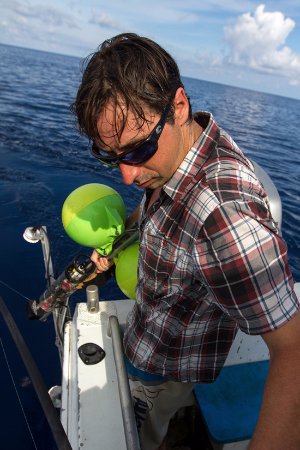
Brennan Phillips prepares to drop a deep sea camera into Kavachi
The methods used to explore Kavachi were particularly well suited for this remote corner of the world. The relatively small boats available in the Solomon Islands would not be able to deploy large robots or manned submersibles, so special battery-powered cameras and lightweight scientific instrumentation had to be used instead. Brad Henning from National Geographic’s Remote Imaging Team took a big risk by dropping his autonomous camera into the crater, and it paid off with the amazing shark footage.
Matthew Dunbabin from QUT designed his drifting robots so that they could transmit their data over wireless in case they were destroyed by an eruption. The support and guidance provided by Corey Howell, the Wilderness Lodge, and Peava Village was essential to the project’s success. Before the project concluded, I was able to give several presentations to local villages on Gatokae Island and I have shared all of my data with the Solomon Islands government. We’re also preparing a comprehensive scientific journal article that, when published, will be available to anyone in the world to read.
Who knows what other secrets Kavachi has waiting for us to discover. I am hoping to return with our team in late 2016, not only to revisit the “Sharkcano” but also to conduct other deep-sea explorations in the region. How are these animals able to survive in such extreme conditions? What happens to them during an eruption? And are there other active submarine volcanoes nearby that we haven’t discovered yet? This fascinating corner of the world seems to have an endless supply of scientific questions to investigate- and it doesn’t get any better than that!
